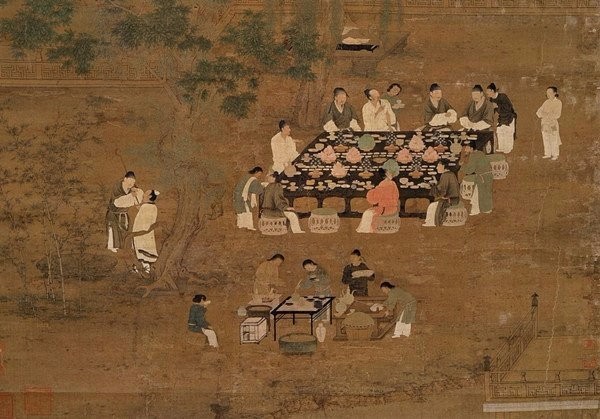With the development of history, in a certain sense, the development of tribute tea laid the foundation for the emergence and development of Chinese famous tea. Many of the tribute tea items in history have still retained their name and traditional quality style, which is also the contribution of ancient tea people to the Chinese tea industry.
1. The origin of tribute tea
The tribute tea originated at the beginning of the Zhou Dynasty and has a history of more than 3,000 years. The history of tea as a tribute can be traced back to the time when Zhou Dynasty’s emperor led eight small countries in the south of conquests in 1066 BC, when tea was used as a local product to tribute.
2. Tang Dynasty tribute tea
Before the Tang Dynasty, there were monks who offered tea to the emperors. The Emperor Yang Guang was sick in Yangzhou. The monk of Zhejiang Tiantai Mountain, who had carried the tea to the emperor. After he was cured, he promoted the rise of trend of tea drinking.

At the beginning of the Tang Dynasty, the famous teas from various places were still used as tributes. Some of people the quality-specific teas to the royal family in order to promote their wealth. With the expansion of the scope of royal and bureaucratic tea drinking, this kind of tribute form is becoming more and more unable to meet the demand. Therefore, the official camp to administer the tribute tea factory which specializes in producing tribute tea has been produced. Most of the Tang Dynasty tribute teas are steamed green tea cakes.
3.The Song Dynasty tribute tea
In the Song Dynasty, the custom of drinking tea was quite popular, and the trends of “tea party” and “Tea Fight” prevailed. Emperors love tea, but also the Song Dynasty is the most, especially the Song Huizong (AD 1101 ~ 1125) was more love tea, personally wrote "Daguan Tea" The Song Dynasty tribute tea has a great development on the basis of the Tang Dynasty. In addition to retaining the tribute tea factory in Yixing and Changxing, there is also an official tribute tea factory in Jian'an, Fujian.


- Yuan, Ming and Qing Dynasty tribute tea
In the production of royal tea in the Ming Dynasty, the tea farmers are heavily burdened.
By the time of the Ming Dynasty, the steamed green tea was gradually reduced. With the appearance of stirred green tea, the tribute tea was started to change to loose leaf tea. The place where tea is produced in China, the age of the tribute has a fixed amount, there is a tea must tribute, no reduction.

In the Qing Dynasty, the tribute tea production area was further expanded. The famous tea-producing areas in Jiangnan had tribute tea by the emperor. For example, Emperor Kangxi in AD 1699 patrolled in Jiangsu Province. The governor tribute best-quality “Frightening and Killing” tea to him. Emperor Kangxi thought the name of the tea was indecent. And named as "Biluochun", from then on, "Biluochun" tea will be harvested to tribute every year.


The processing methods of the tribute tea of the Yuan, Ming and Qing dynasties and the tribute tea items have undergone more than 700 years of reform and have great differences. The Yuan Dynasty still focused on steamed green tea cakes, and the Ming Dynasty began to change the tribute loose leaf tea. The technology of stirred green tea has been greatly developed. The delicate buds are harvested and stirred into tea of various shapes. At this time, steamed green tea, baked green tea, and stirred green tea coexist. To the Qing Dynasty, on the basis of the Ming Dynasty tribute tea, the main purpose was to bake green tea and stirred green tea. The processing was more elaborate and the appearance was different. At the same time, oolong tea, black tea, dark tea, scented tea, etc. were created, and the majority of tea production areas were formed a variety of tea tribute tea.